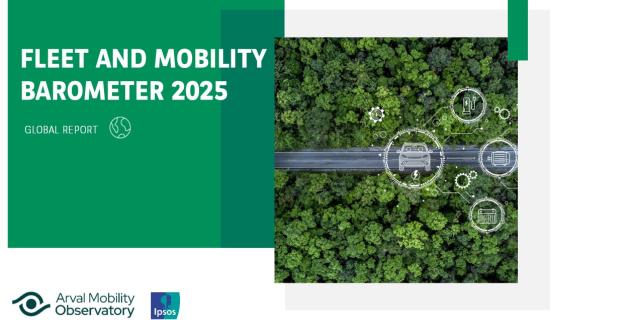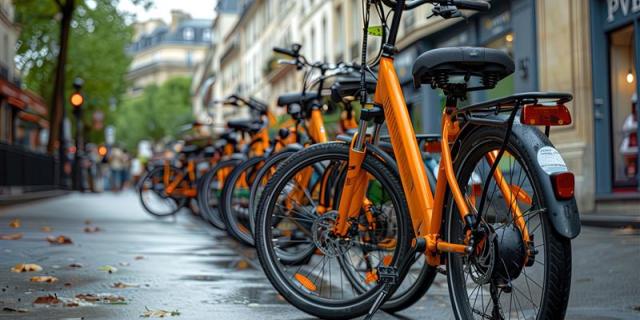Safety and Security on our Roads
Paris, 21st of January, 2021
Road safety is – justifiably – one of the most important topics in mobility.
Several innovations have brought significant advances. Airbags, anti-lock braking and traction control, and even the humble seatbelt have been developed to protect drivers and passengers. Invented for Volvo in 1959 by a Swedish engineer Nils Bohlin, the three-point seatbelt was a game-changer for road safety, with over a million lives saved since its inception. In the interest of safety, Volvo made the device available to all other manufacturers for free.
But unfortunately, even these step-changes are not enough to bring the number of vehicle-related casualties down to zero, in particular when it comes to other vulnerable road-users, such as pedestrians.
Globally, over one million people are killed on roadways each year. Fatal and non-fatal road casualties are expected to cost the global economy over 1 trillion Euro between now and 2030.
Europe has the lowest road-related death and injury rate in the world, with only 2% of global fatalities. But even while Europe has seen a 21% decrease in road deaths between 2010 and 2019, over 22,000 people still died on EU roads in 2019 – about 44 per million Europeans. Of this number, 45% of fatalities were from vehicle occupants, while two-wheelers and pedestrians respectively account for 26% and 21% of total fatalities. In Europe, improvements in road-safety are beginning to stall. The cost of road-safety failures to the EU is around 280 billion Euro, equivalent to about 2% of GDP.
It’s unfortunately a familiar trend. The US has not improved significantly over the past decade, and registered over 36,000 road-related deaths in 2019. That’s nearly 119 lives lost per one million Americans – a rate considerably higher than other developed nations. In fact, the number of US pedestrian fatalities has dramatically increased since 2009, up to the same yearly deaths today as in 1990.
In the US, some of this increase can be attributed to some 9,000 additional kilometres driven per year by Americans, larger vehicles such as pickup trucks and SUVs, generally higher urban speeds, and fewer dedicated lanes for bicycles. According to researchers, countries with denser urban areas, lower speeds, better road design, and stricter law enforcement lower the vehicle-related deaths.
Across the world, Vision Zero has helped cities, countries, and industry focus on road-safety, by exchanging best practices and setting a goal of zero fatalities. First introduced in Sweden in 1997, it aims to lower fatalities and serious injuries by 50% by 2030, completely eradicating them by 2050. Although Helsinki and Oslo scored a major success in 2019, as the first major cities to eliminate vehicle fatalities, other countries are still lagging behind.
In the quest for zero accidents, the European General Safety Regulation already mandates new cars in the EU to come preinstalled with the emergency communication system eCall that notifies emergency services as well as transmits location and other data in case of a crash. From 2022, this regulation will include additional mandatory ADAS for new cars that try to not only reduce accident consequences, but also prevent them from happening in the first place. These will include Intelligent Speed Assist, Lane Keeping and even recorders. Together, these ADAS are expected to save 2,500 lives in the EU every year once fully implemented. In addition to that , several insurers offer drivers of a vehicle equipped with advanced safety features, a saving on their insurance policy.
But even this is not enough. In particular, the rise of smartphones has been attributed to the increase in pedestrian and bicycle casualties. According to the EU Commission, up to 30% of road accidents are due to driver distraction. A driver engages in a secondary task – that is, any task that isn’t undistracted driving, such as using a phone – every 96 seconds.
The European New Car Assessment Programme, better known as Euro NCAP, wants to address this issue. Its 5-star rating system assesses safety aspects such as adult, child and vulnerable road-user safety. A 5-star Euro NCAP vehicle is 68% more likely to save lives than a 2-star one.
But the organization wants to go further with the inclusion of distraction in its list. It proposes a roadmap for 2025 that requires all new cars sold to be equipped with driver monitoring systems, or DMS, as of July 2022. Specifically, the vehicle will continuously assess the driver’s attention and take appropriate measures when the focus decreases.
Some OEMs have heard the call and are already working on solutions.
From 2020 onwards, Volvo has limited its vehicles to 180 kilometers per hour and will be installing a DMS feature, dubbed SPA2. By tracking the driver's eyes and scanning their hands on the wheel, the vehicle can suggest rest or guide the driver to a safe stop on the side of the road.
DMS features combined with ADAS are expected to re-energise the “Vision Zero” initiative and break the plateauing trend.
Enhancing road safety also requires improvements outside of the vehicle. Infrastructure, regulations, and strict control of driving behaviours such as speeding have been the preferred measures of regulators in achieving road-safety improvements. European authorities are already investing next-generation, computer-vision compatible road signs supporting ADAS vigilance.
Next, as non-resident drivers represent 5% of traffic but 15% of driving offences, cross-border enforcement of legislation, as well as standardisation of driving licenses across EU member states, should yield improvements.
Finally – not all road-safety improvements are related to technology or infrastructure. The human component is also key. As part of the ongoing effort of improving road safety, the European Commission looks to expand and improve in areas like education, communication and training. Although there is still a lot of work to be done, we hope that Vision Zero becomes less of a vision and more of a reality.











